|
1
|
The New Kingdom comprises the 18th to 20th Dynasty.
In the New Kingdom the Egyptian kings founded an empire, by conquering
Nubia and parts of the Near East. The new provinces brought huge wealth
into the country.
|
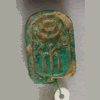 |
|
2
|
The wealth of the period is reflected in the exceptional
degree of decoration of objects of daily use.
|
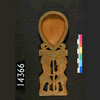 |
|
3
|
The most important conqueror of the 18th Dynasty is
Thutmose III (1479-1425 BC) who reached the Euphrates with his armies.
|
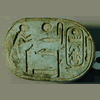 |
|
4
|
Another important king was Amenhotep III (1388-1351/50
BC). He reigned about 38 years. Under his reign the art and culture
of the New Kingdom reached its highest point.
|
|
|
5
|
Ramesses II (1279-1213 BC) is one of the best known
kings of Egypt. He battled against the Hittites and made a peace treaty
with them. Across the whole country he built or rebuilt many temples.
On other monuments he just added his name.
|
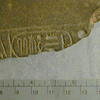 |
|
6
|
The second part of the New Kingdom is often called
the Ramesside Period. Most of the kings of the 20th Dynasty had the
name Ramesses.
|
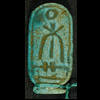 |
|
7
|
The kings of the 18th to 20th Dynasties were buried
in individual rock-cut tombs in a desert valley at Thebes. Women and
princes of the royal family were generally buried elsewhere in Thebes
West.
|
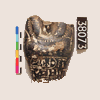 |
|
8
|
Pyramids had been just the largest part of a royal
cult complex; similarly, a king's tomb in the Valley of the Kings was
a reliquary in a larger religious unit. For each tomb there was a temple
in the Nile valley where the king was worshipped during his life and
into eternity.
|
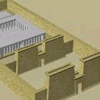 |
|
9
|
The high officials of the 18th Dynasty were buried
in rock cut tombs at Thebes. The chapels of these tombs, accessible
to the living responsible for maintaining the cult there, were often
decorated with paintings or reliefs.
|
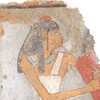 |
|
10
|
High officials of the late 18th Dynasty were buried
at Saqqara (the cemetery of the administrative centre Memphis); here
the common tomb chapel type for a high official was a free standing
temple-like structure.
|
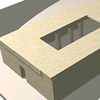 |
|
11
|
The kings of the period built or enlarged temples
on a huge scale. Many of these temples are today destroyed because the
the main building material was limestone - perfect for burning lime
in the post-Pharaonic period. Others were built in sandstone; essential
parts of these sometimes survived.
|
 |
|
12
|
Egypt in the New Kingdom is part of a system in which
kings of different countries corresponded with each other. The writing
system used for the correspondence is the cuneiform script. At Amarna
there was found an archive of the New Kingdom with many letters written
by foreign rulers.
|
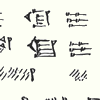 |
|
13
|
King Amenhotep (IV) (1351-1334 BC) changed his name
to Akhenaten after his fifth year, and moved the religious centre of
the country to Amarna. The worship of one god, the sun-disk (Aten),
became the main religious politics of the ruler. Other gods, especially
the former main deity Amun, were removed.
|
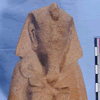 |
|
14
|
The period of king Akhenaten is named after the modern
name of its religious centre: Amarna. The period is also well-known
for its innovatory art, notably naturalistic scenes and realistic depictions
of the king and his family. However, the underlying principles of traditional
Egyptian art were maintained.
|
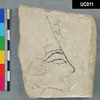 |
|
15
|
New technologies were introduced in the New Kingdom.
Glass making became important in production of luxury objects.
|
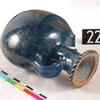 |
|
16
|
The New Kingdom is well-known in part from the relatively
numerous well preserved daily life objects. One main reason for that
is, that daily life objects were now placed into tombs, on a scale not
known in previous periods.
|
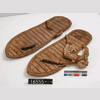 |
|
17
|
Many elite burials included papyri with religious
texts, important for the 'survival' of the dead in the Underworld. The
largest group of these papyri are today called 'Books of the Dead'.
|
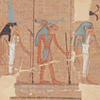 |
|
18
|
New statue types were developed, such as stelophorous
statues, showing a man with a stela in front of him, inscribed with
a hymn to the sun-god.
|
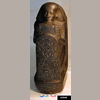 |